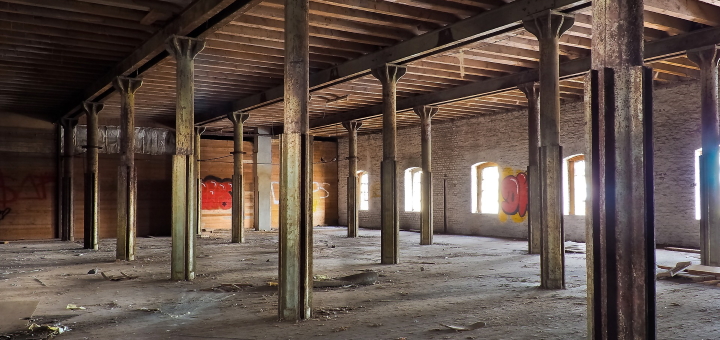How landlords can avoid paying business rates on vacant properties

Having to spend hefty sums of money on empty and vacant commercial properties that produce no income at all is just bad business. For this reason, landlords are exploring solutions to escape business rates on vacant properties. The government lowered the rates relief time to six months for industrial buildings and three months for non-industrial properties in the year 2008.
This was an incentive to landlords to motivate them to find tenants quickly and fulfil existing demand without needing to rely on the development of new commercial properties. Also, the measure was introduced to improve competition standards in the market.
Usually, commercial property tenants are required to make business rate payments. However, under this rule, non-industrial property landlords are obligated to begin remitting the entire business rates three months after a tenant leaves the property while industrial building landlords are allowed six months.
The current law is a huge issue for property owners, because when they are unable to find tenants for their premises within this period, they will end up incurring large rate costs without getting any revenue.
Properties exempted from business rates
Some properties, regardless of their status of occupation, are fully exempted from paying business rates. Hence, if your property is grouped into these categories then you do not have to be concerned with paying rates:
- Land utilised for agriculture and structures constructed on it. This also applies to fish farms
- Church buildings and halls listed as being used for religious aims
- Premises that are used to support the welfare of the disabled.
It is important to know that the above exemptions apply only to properties within England. Exemptions in Wales are applied differently.
Empty properties exempt from business rates
In the past, business rates were not charged on vacant properties with a rateable value lower than £18,000. Now, however, only empty properties with a rateable value lower than £2,900 are exempted from paying business rates. The landlords resume paying business rates once they get tenants for their properties.
- Empty Listed properties are exempted up to when they are occupied again
- Empty properties whose ownership is under registered charitable organisations get exemption only after it is determined that they will be used for charity once they are reoccupied
- Vacant community amateur sports club properties only get an exemption if they are deemed to be utilised for sports in the future. These buildings are commonly known as zero-rated properties.
Other terms that provide empty properties with an exemption from business rates are:
- In case the owner of the property has declared bankruptcy
- Where the building is under the ownership of a company in administration. However, where the business is still engaged in property trading, they will have to make business rate payments.
- In case the owner was given custody of the property in their power to act as trustee under contract
- Where the property is in an economically irreparable shape or is unfinished.
What does this mean for property owners?
If your property does not qualify under any of the above specifications, then as soon as three months elapse after the tenant vacates (for non-industrial) or after half a year (for industrial) then you are obligated to pay the full business rates prescribed for your property. Finding tenants within the stated time is an uphill task especially in the current economic climate.
Though this law appears to be very harsh on landlords, there exist many loopholes that landowners are exploiting in their favour to escape paying rents on vacant properties. Using these measures alleviates the huge financial burden that they would otherwise have been forced to incur.
Are you getting vacant property rate bills? Are you worried that one of your properties will soon become vacant? Do not worry – here are some techniques you can employ.
Short-term tenants
A common strategy used to avoid paying business rates on vacant properties is looking for tenants who are happy to occupy or let the property for a minimum of six weeks. Once your property is occupied or let, the tenant will have to cover the business rates but after their lease expires the property becomes vacant again, and your exemption period starts afresh. This process can be iterated over and over. Most of the time, a consideration of a reverse payable premium is made to minimise the tenant’s liability.
However, for this technique to be acceptable, there must be evidence that the tenant is set to gain from moving into the property and that there exists a level of permanence. Another issue with this technique is searching for temporary tenants, though some businesses offer assured temporary property occupation at a cost. You can also use property guardians to live or work in your vacant property, protecting it effectively and keeping it free from squatters.
The owner occupies their property
In some instances, the owner of the property might take up temporary tenancy on their property. Using this technique, the landlord settles in their property for a minimum of six weeks; then, when the landlord vacates, the rates exemption period is renewed. This technique can be used by a landlord repeatedly. Nevertheless, similar to the short-term tenant method, the owner has to show that the occupation of the property was advantageous to them.
Letting to charity
Leasing out your property to charitable organisations is an additional productive technique you can employ. Registered charitable organisations are only required to settle 20% of the total business rates. Thus, as far as they utilise the property for their charity activities only, then you can plan to reimburse them the 20%, possibly through contributions. This is certainly a beneficial arrangement instead of being forced to fork out the whole 100% from your coffers.
Demolishing the property
An occupier of property must derive benefits from it for it to be regarded as business rates payable. If the worst comes to the worst, a landlord might opt to demolish their property so that it is less beneficial. However, this choice should only be implemented after weighing other considerations. It is crucial to carry out a comprehensive cost-benefit analysis to avoid remorse.
Conclusion
There are several methods one can use to avoid paying rates on vacant properties. However, some rank higher in effectiveness than others. The techniques listed above are guaranteed to help you achieve your desired objective. Nevertheless, only time will tell whether the government will come up with countermeasures to seal these loopholes.
Information provided here was correct at the time of publication, but we recommend staying up to date with potential changes in the future.
Photo credit: Michael Gaida









